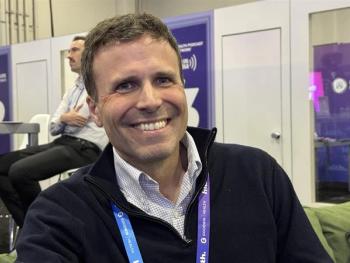
Can hospitals really lose a provider to a disorganized recruiting process? | Viewpoint
There are a lot of variables in talent acquisition in healthcare, but hospitals should focus on what they can control: a process that makes a good impression.
A hospital was slow to get an employment offer letter out to a prospective physician. The position was located in a rural facility and would fill a vacancy in family medicine that had been vacant for eight months.
Twenty-four hours after the offer letter went out – a response came back: it was a polite and carefully worded declination.
This was a setback. The recruiter solicited feedback from the candidate to no avail. The hospital now had to start their search all over again.
The 40% chance a candidate will decline a rural hospital job offer
The talent is short everywhere, but it’s arguably hitting rural America harder. According to the American Hospital Association,
While there are a lot of variables in talent acquisition in healthcare, the one a hospital can best influence is its process, so it’s important to smooth and streamline the recruiting process. This is because rural hospitals can and do lose physician candidates – and nurse practitioners and physician assistants – to a disorganized recruiting process.
We often hear it anecdotally and when those stories are paired with industry data, the evidence is very compelling. For example, consider the following statistics from the
- Turnover is at its highest in five years; rural hospitals have a physician turnover rate of 21% – about twice as high as hospitals in urban or suburban locations;
- Nearly half (47%) of vacancies for physicians remained unfilled at year’s end; that’s also true for 26% of vacancies for advanced practice providers (AAPs);
- About 80% of the offers made to physicians in locations with populations of greater than 100,000 were accepted; by contrast, just 63% did so in small rural locations.
Think about the flip side of that last statistic: nearly 4 in 10 providers declined positions in rural settings. In other words, there’s a 40% chance a candidate will decline an offer letter sent by a rural hospital.
Getting a handle on the hospital recruiting process
What aspects of recruiting can rural hospitals improve? In our experience, there are four key areas ripe for improvement.
1. Get a handle on all current positions
The first step is to inventory all the positions in the hospital. Document the key attributes that go with it such as certifications, locations, duties and compensation. This information provides your HR team with the data they need to start recruiting for open positions faster because they already have the information they need.
Make sure anyone with responsibilities for hiring, not just HR, has access to this information so that the whole organization can use it to streamline hiring plans and talent searches.
2. Better manage candidate engagement
How an organization engages candidates has an outsized impact on recruiting. A slow process can make a candidate feel like their time is being wasted – a common reason a candidate drops out of the running early in the process.
Strive to make it as easy as possible for candidates to apply. For example, don’t ask a doctor to re-enter their resume manually into your system, you should be able to parse it from a resume or any other way it is provided. This enables both parties to focus on higher-level tasks.
Recruiters should also be able to send candidates information requests, schedule interviews, and even a survey to ask for feedback. Be sure to track and report on those interactions. This enables the whole team from the hiring manager to the C-suite to see the level of effort and current status.
3. Streamline onboarding
The AAPPR report says while onboarding isn’t part of time-to-fill, a closely watched metric in healthcare recruiting, “onboarding is a continuance of the recruitment process.” One of the biggest complaints that gives candidates second thoughts is when the various teams – HR, IT and finance for example – repeatedly ask for information the candidate has already submitted.
HR should review its checklist of action items an onboarding provider needs to complete – and look for ways to simplify it. This includes collecting W-2 information, along with the provisioning of equipment, system accounts, badges, parking and orientation training.
4. Credentialing providers
Credentialing is part of the onboarding process and can easily take three or four months. While hospitals can’t control how quickly payers authorize credentials, they should have their part of the process polished.
For example, some organizations are still printing off forms, asking providers to fill them out by hand, and then scanning them as PDFs. In such cases, this process can be improved dramatically with simple automation. Anyone who needs to authenticate credentials should have a single place to go to review the documents.
It doesn’t stop with onboarding either. The best organizations also help providers remember and complete continuing education so that credentials don’t lapse.
Recruiting is a process of continuous improvement
Healthcare will continue to face a talent crunch in the foreseeable future. Yet there is reason to be optimistic too. For example, a
The key for rural hospitals is to focus on the things they can control – such as the process. As the adage goes, you never get a second chance to make a first impression.
Rob Hankey is the CEO of Intelliworx.







































